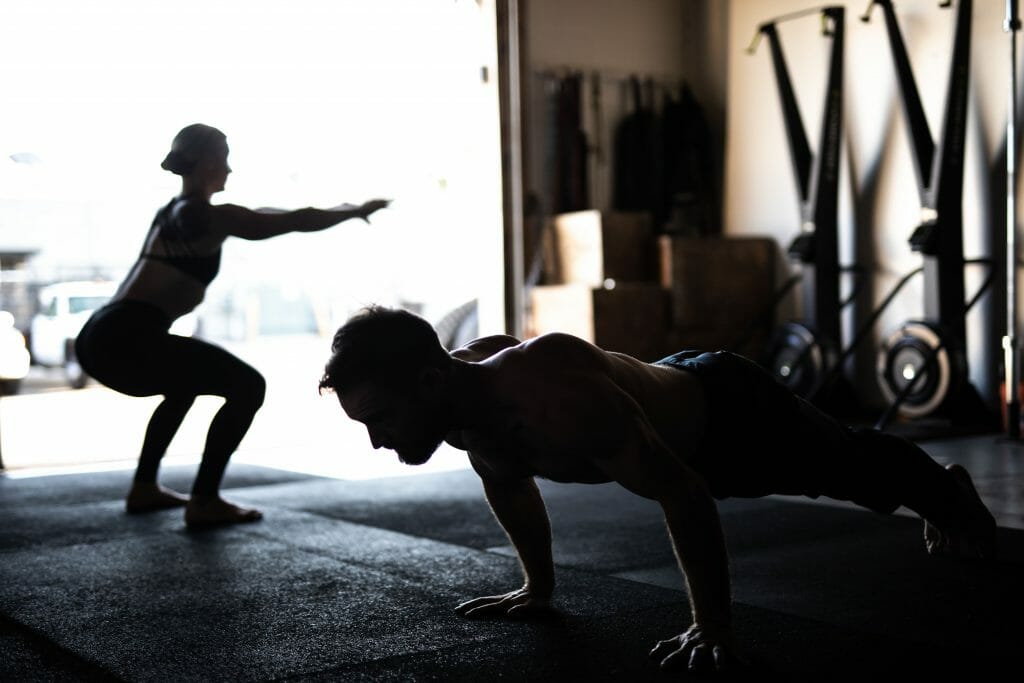Athletes from all sports and activities have likely come across the terms endurance, stamina, and work capacity. But what do each of these really mean? Is there even a difference between them or are we using different words to classify the same things? The purpose of this article is to create a conversation among coaches from varying disciplines. What do these terms mean to different athlete populations, and how can you go about including them in your own training?
When I really sit and think about it, I feel that at some point along the way I started to create a soft boundary between how I approach the concepts of endurance, stamina, and work capacity from a programming perspective. If we look at traditional training literature, there is often a bit of a binary choice: pure endurance training on the one end and pure strength training on the other. In this simplified view, seldom do these two intersect. And when they do, there is often a raucous debate about the “interference effect”—how doing one approach wreaks nothing but havoc for the other end of this imagined training spectrum.
With tactical athletes, I don’t have the luxury of time, meaning I don’t have a set schedule, fixed competitions, or really any control over where my athletes need to be—and especially when they need to be fit. What this means is that my athlete population needs to be good at all things all the time, and it was that realization that spawned this mental differentiation between the three terms in question.
Endurance
When I program a pure endurance session, two themes are floating around in my head: open-ended distance and open-ended pacing. If we think of the nomenclature from Training for the New Alpinism or Training for the Uphill Athlete, this would be my Zones 1 and 2 area of aerobic base building training, in which the emphasis isn’t necessarily on nailing a specific per-mile pace. Rather, I need my athlete to accumulate a high volume at a low to moderate intensity. In practice, this means cyclical sessions including rucking, running, swimming, rowing, etc., or even a combination of a few of those activities.
This isn’t to say that we can’t get specific with our endurance prescriptions. In fact, if I am intimately familiar with the athlete, I often will. If I know, for example, that an 8:30/mile pace is purely Zone 1 or 2 for an athlete, I’ll often prescribe that and hold him or her to it. Likewise, if I know he or she only has 60 minutes to train and needs a bit of active recovery, I can deliberately program an “endurance session” to fit the bill. The athletes I work with understand this to mean sustainable Zone 1–type work.

Stamina
Stamina is where things get interesting. For many coaches and athletes, there may be no difference between stamina and endurance, and in some cases I’d agree with them. However, I’ve seen success in treating these sessions slightly differently. For my athletes, a stamina session will likely include a specific distance (or series of distances) and a specific pace (or series of paces). Whereas the goal of an endurance session is typically “getting better at going long,” the goal of a stamina session could be stated as “getting better at going fast for longer.”
Again, it’s important to reiterate the point that I’ve created these delineations for myself as a way of differentiating between session objectives so that the athletes I work with have a better understanding of what they should hope to gain from a particular session. When I prescribe a stamina session for one of my athletes, that athlete knows the goal is to maintain a pace for a particular distance and likely repeat that pace over a series of intervals (e.g., 4×1-mile repeats @ 7:00/mile pace).
Work Capacity
If we think stamina is confusing, work capacity is likely even more so. In many corners of the fitness industry, work capacity has become a bit of a buzzword to encompass any and all classifications of gym activity. In my opinion, much of this comes from the CrossFit/functional fitness world, in which work capacity is often equated to some combination of barbell work and calisthenics like burpees, pull-ups, etc.
I take a different approach, classifying work capacity sessions as those in which time is fixed and the amount of work completed is the variable that is adjusted from one week to the next. The “work” will vary depending on the athletic population in question. For example, with tactical athletes the prescription will include things like sandbags, rucksacks, heavy D-balls, etc., whereas for a triathlete we may simply look to create a bodyweight mixed-modality muscular endurance circuit.
The takeaway here is that work capacity can almost be thought of as a catchall for sport-specific muscular endurance work.
Training Endurance, Stamina, and Work Capacity
I hope you can use these same general category definitions to help you compartmentalize your workouts and therefore make them more targeted. For mountain athletes—runners, mountaineers, skimo racers—low-intensity aerobic base building (endurance) should form the bulk of training. Once that base is strong enough to support higher-intensity intervals (stamina) and sport-specific muscular endurance (work capacity), those workouts can be layered on top of the bread-and-butter endurance sessions, especially as the athlete nears their goal event.
But for tactical athletes, where the primary aim of training is overall physical readiness (not readiness for a single race), endurance, stamina, and work capacity will be weighted and programmed differently than for a traditional endurance athlete. Endurance—aerobic capacity—is still vital, but those sessions won’t look the same as they do for a mountain runner. Ditto for stamina and work capacity. However, each plays a role in priming tactical athletes for whatever gets thrown at them. That’s where these fine distinctions come into play. By giving structure to complexity, they prevent training from becoming its opposite: randomized work.
This article was originally published by Drew Hammond.
You may also be interested in:
Every Minute on the Minute Training for Tactical Athletes
Muscular Endurance: The Money Workout
Slow and Steady is Boring. Is it Necessary?


1 Comment
Pingback: Applied Sports Science newsletter – October 10, 2019 | Sports.BradStenger.com